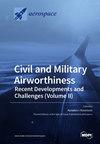增强航空图像中的小物体检测:利用 PCSG 模型的新方法
IF 2.1
3区 工程技术
Q2 ENGINEERING, AEROSPACE
引用次数: 0
摘要
通用目标检测算法在检测大中型目标时表现出色,但在检测小型目标时却举步维艰。然而,随着航空图像在城市交通和环境监测中的重要性日益凸显,在此类图像中检测小型目标已成为一个前景广阔的研究热点。小目标检测的难点在于像素比例有限和特征提取的复杂性。此外,目前主流的检测算法往往过于复杂,导致小目标的结构冗余。为了应对这些挑战,本文推荐基于 yolov5 的 PCSG 模型,该模型优化了检测头和主干网络。(1) 引入了增强型检测头,其新结构增强了特征金字塔网络和路径聚合网络。这一改进增强了模型的浅层特征重用能力,并为较小的对象引入了专用检测层。此外,还对网络中的冗余结构进行了修剪,并使用轻量级和通用的上采样算子 CARAFE 来优化上采样算法。(2) 本文提出了名为 SPD-Conv 的模块,以取代 yolov5 中的步进卷积运算和池化结构,从而增强骨干网的特征提取能力。此外,还利用幽灵卷积来优化参数数量,确保骨干网满足航空图像检测的实时需求。RSOD 数据集的实验结果表明,PCSG 模型表现出卓越的检测性能。mAP 值从 97.1% 增加到 97.8%,而模型参数数则减少了 22.3%,从 1,761,871 减少到 1,368,823。这些发现清楚地表明了这种方法的有效性。本文章由计算机程序翻译,如有差异,请以英文原文为准。
Enhancing Small Object Detection in Aerial Images: A Novel Approach with PCSG Model
Generalized target detection algorithms perform well for large- and medium-sized targets but struggle with small ones. However, with the growing importance of aerial images in urban transportation and environmental monitoring, detecting small targets in such imagery has been a promising research hotspot. The challenge in small object detection lies in the limited pixel proportion and the complexity of feature extraction. Moreover, current mainstream detection algorithms tend to be overly complex, leading to structural redundancy for small objects. To cope with these challenges, this paper recommends the PCSG model based on yolov5, which optimizes both the detection head and backbone networks. (1) An enhanced detection header is introduced, featuring a new structure that enhances the feature pyramid network and the path aggregation network. This enhancement bolsters the model’s shallow feature reuse capability and introduces a dedicated detection layer for smaller objects. Additionally, redundant structures in the network are pruned, and the lightweight and versatile upsampling operator CARAFE is used to optimize the upsampling algorithm. (2) The paper proposes the module named SPD-Conv to replace the strided convolution operation and pooling structures in yolov5, thereby enhancing the backbone’s feature extraction capability. Furthermore, Ghost convolution is utilized to optimize the parameter count, ensuring that the backbone meets the real-time needs of aerial image detection. The experimental results from the RSOD dataset show that the PCSG model exhibits superior detection performance. The value of mAP increases from 97.1% to 97.8%, while the number of model parameters decreases by 22.3%, from 1,761,871 to 1,368,823. These findings unequivocally highlight the effectiveness of this approach.
求助全文
通过发布文献求助,成功后即可免费获取论文全文。
去求助
来源期刊

Aerospace
ENGINEERING, AEROSPACE-
CiteScore
3.40
自引率
23.10%
发文量
661
审稿时长
6 weeks
期刊介绍:
Aerospace is a multidisciplinary science inviting submissions on, but not limited to, the following subject areas: aerodynamics computational fluid dynamics fluid-structure interaction flight mechanics plasmas research instrumentation test facilities environment material science structural analysis thermophysics and heat transfer thermal-structure interaction aeroacoustics optics electromagnetism and radar propulsion power generation and conversion fuels and propellants combustion multidisciplinary design optimization software engineering data analysis signal and image processing artificial intelligence aerospace vehicles'' operation, control and maintenance risk and reliability human factors human-automation interaction airline operations and management air traffic management airport design meteorology space exploration multi-physics interaction.
 求助内容:
求助内容: 应助结果提醒方式:
应助结果提醒方式:


